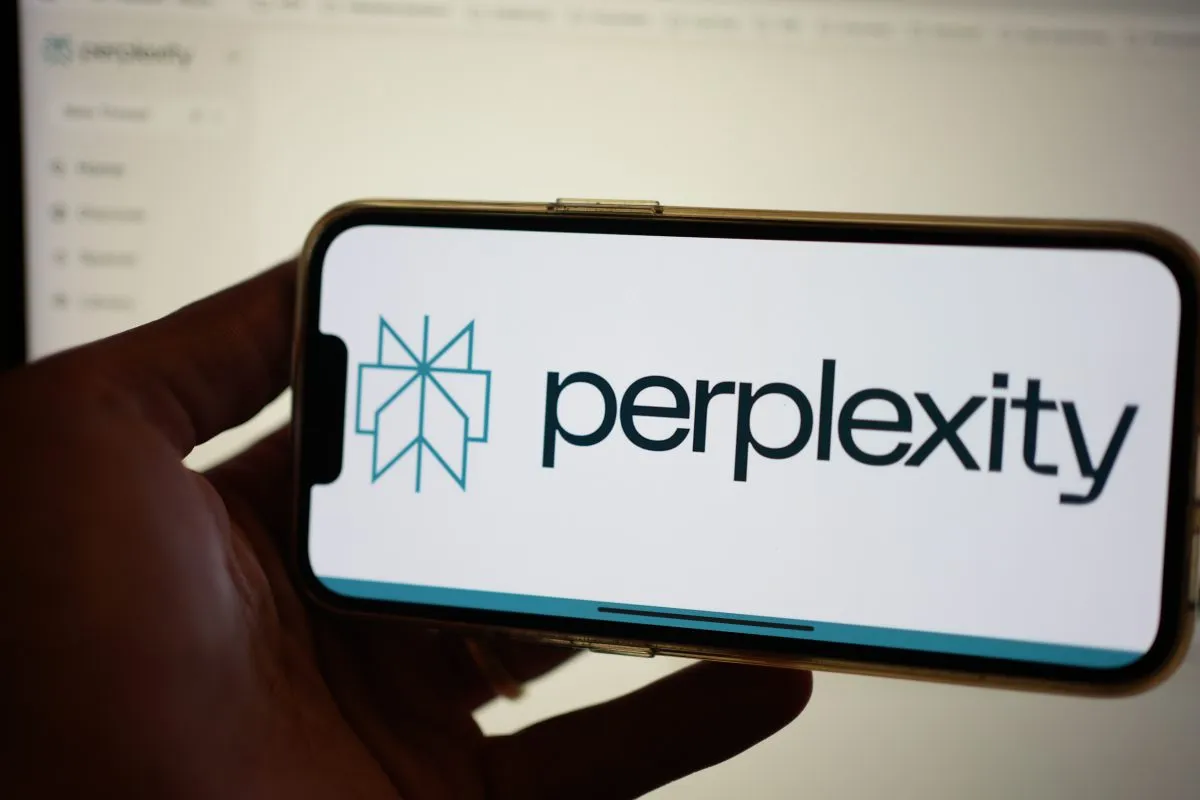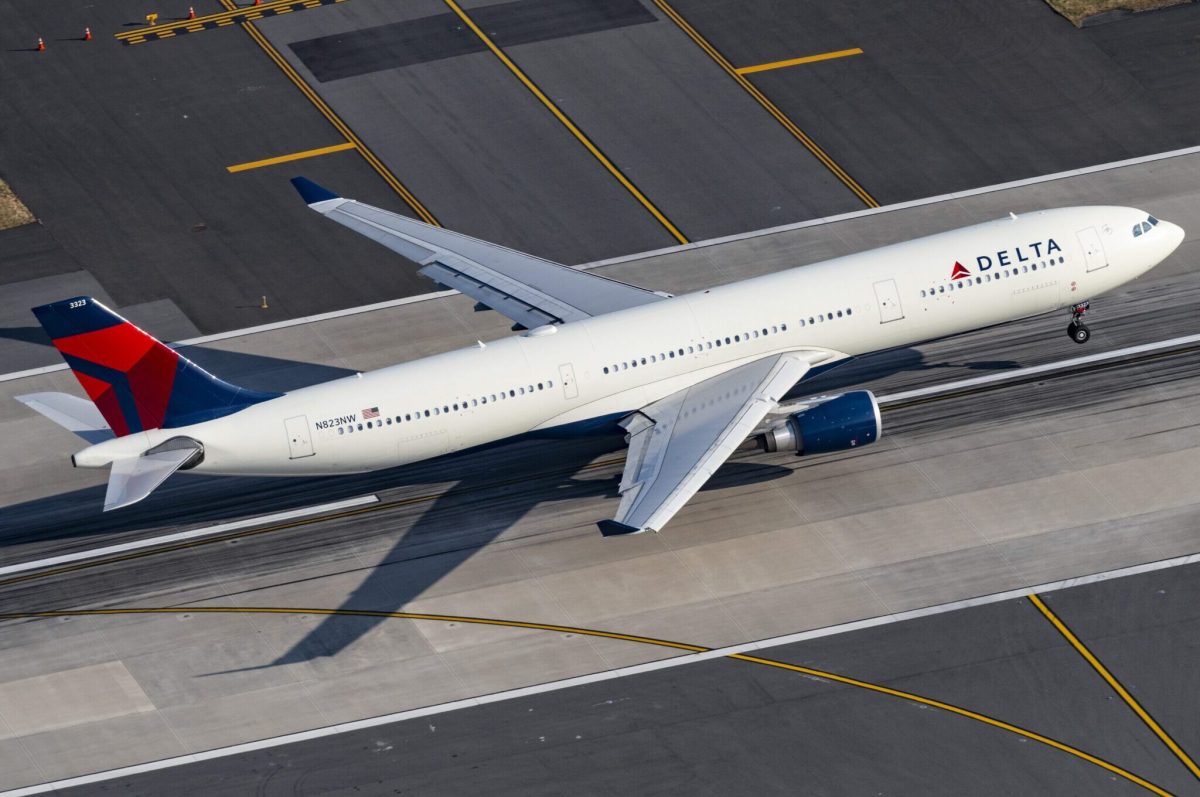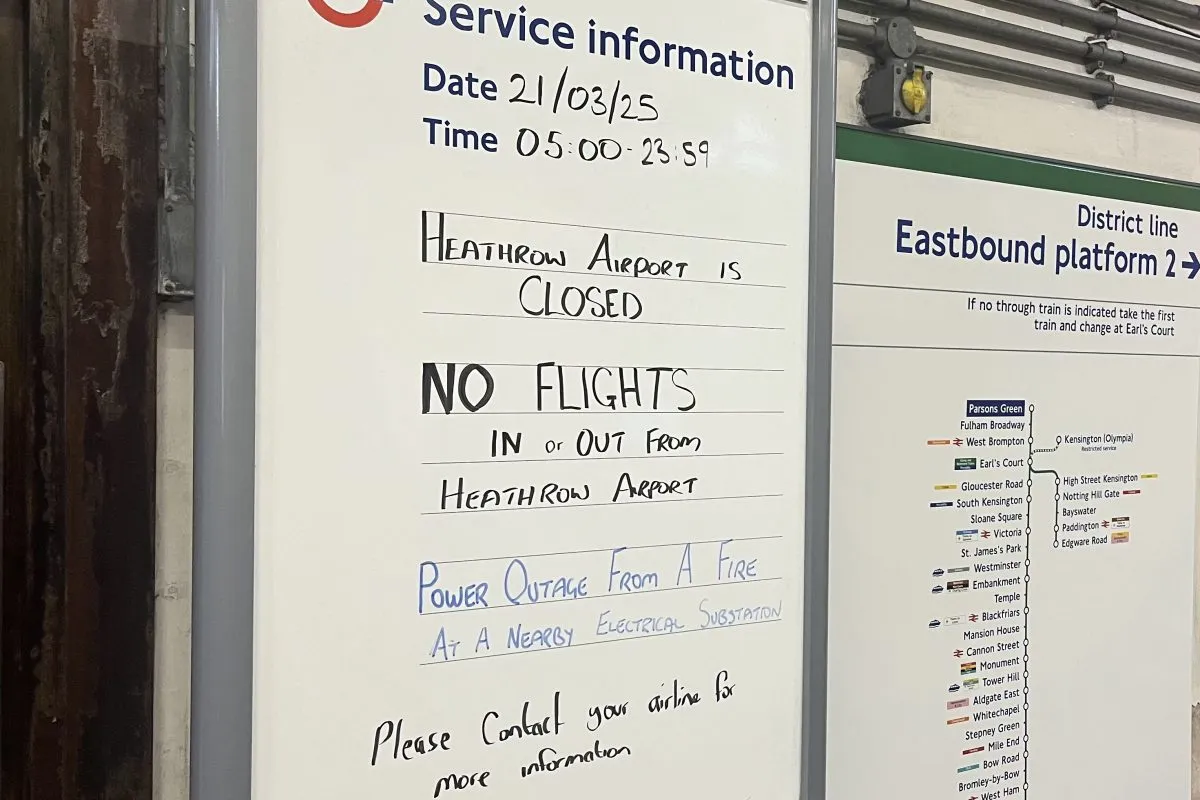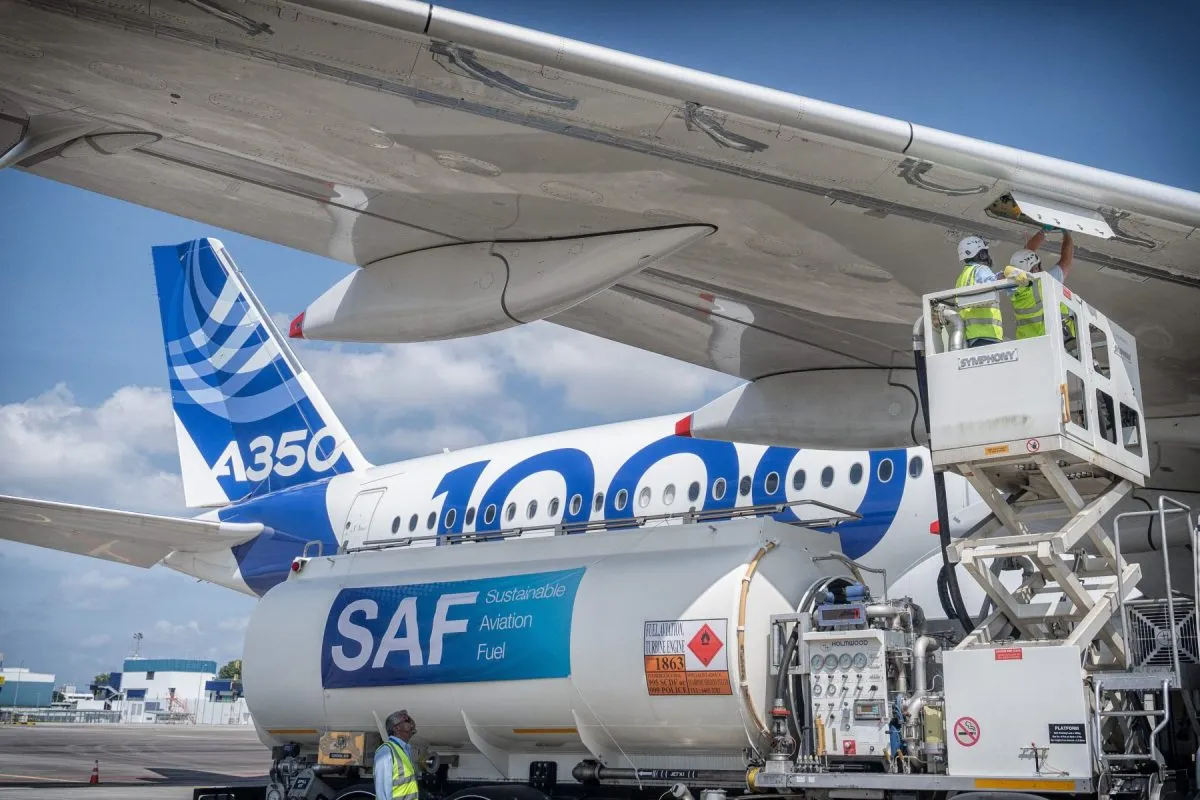Uber and Lyft's Growth Is Slowing in Most Major U.S. Cities
Skift Take
Some 13 to 15 million Americans will actively use ride-sharing services by the end of this year and that's close to the ceiling of the total U.S. market that Uber and Lyft, the two largest U.S. ride-sharing companies, can capture.
That's according to a report from 7Park Data, an NYC-based data intelligence company, which found that 20 to 25 percent of U.S. smartphone users have the Uber app installed and about three percent of them use it every week to order rides. The average ride is less than 15 miles. Ridership between Uber and Lyft has fallen about nine percent from the second quarter 2015 to the second quarter 2016, though.
While installs on only 20 to 25 percent of devices sounds like Uber has a lot of room to grow, a lot is likely an overstatement. Uber's largest markets are major U.S. cities where ride-sharing is more useful than using personal vehicles or public transportation. The rest of the U.S. market lives in areas where most people own their own vehicles and the hurdles for ride-sharing are higher. "While the ride-sharing industry is expected to continue growing, the rate of growth is expected to slow," the report states. "Uber, particularly, may be close to saturating at least its major U.S. markets, especially given lower fares and increased competition."
The report's data was drawn from panels that cover more than 50 million mobile devices across more than 75 countries. 7 Park analyzed anonymous mobile app usage statistics, device and network data and receipt data from millions of active U.S. and global consumers that use Uber and Lyft, including those of their competitors. It focused on active activity per user, or users who regularly use the Uber app each month rather than having it installed without ordering any rides.
The data doesn't segregate travelers living in one U.S. city and using Uber and Lyft in another. If, for example, a traveler lives in a suburb of Kansas City, Missouri where they don't use ride-sharing but travel to New York City for business or leisure where they do -- that's not considered in the report. While Uber and Lyft may be close to saturating their largest U.S. markets with residents, they both have potential to gain market share among travelers.
Byrne Hobart, an analyst for 7 Park, said the data show that rental car companies have been impacted in the largest U.S. ride-sharing markets that are some of the most visited U.S. destinations. "Uber and Lyft really need to go after commuters to increase their market shares and that's exactly what they've been doing this year," said Hobart. "But it's still too early to know how that push has played out and if they've had success."
The Uber-Lyft U.S. Rivalry
In 2014 there was a significant spending gap with new users between Uber and Lyft but now that's converged a bit, said Hobart. "At this time we don't really know what the lifetime value of an Uber user is...Uber's expected revenue per user is higher for a year after a new user starts they start than right after they start," said Hobart.
During the past two years the average cost of an Uber or Lyft ride has gradually gone down as both companies are spending more per user this year than they were in 2014. "When we look at first-time users from 2014, they would typically spend a bit more than new users would spend right now in 2016," said Hobart. "In 2014 a new Uber user would typically spend about $70 in their first month and then spend more than that per month in their first year. But now the average Uber user spends about $55 during their first month which is pretty similar to what the average Lyft user spends."
The report found 12 percent of Uber rides in its five largest U.S. markets contained surge pricing with an average surge fare of $9.13 and an average multiplier of 1.67 in August. In the same markets, 14 percent of Lyft rides contained surge pricing with an average surge fare of $5.90. "We see a lot of surge riding with Lyft in a lot of locations and that's mostly a case of where supply and demand are imbalanced."
It's evident in the map below that not only is Uber the dominant U.S. player but Lyft is also stronger on the west coast. "Uber and Lyft both started in San Francisco and for Lyft, it probably made more sense for them to focus on west coast markets where ride-sharing wasn't originally a perfect fit versus east coast cities like New York City where it was," said Hobart. "Government regulations also play into it."
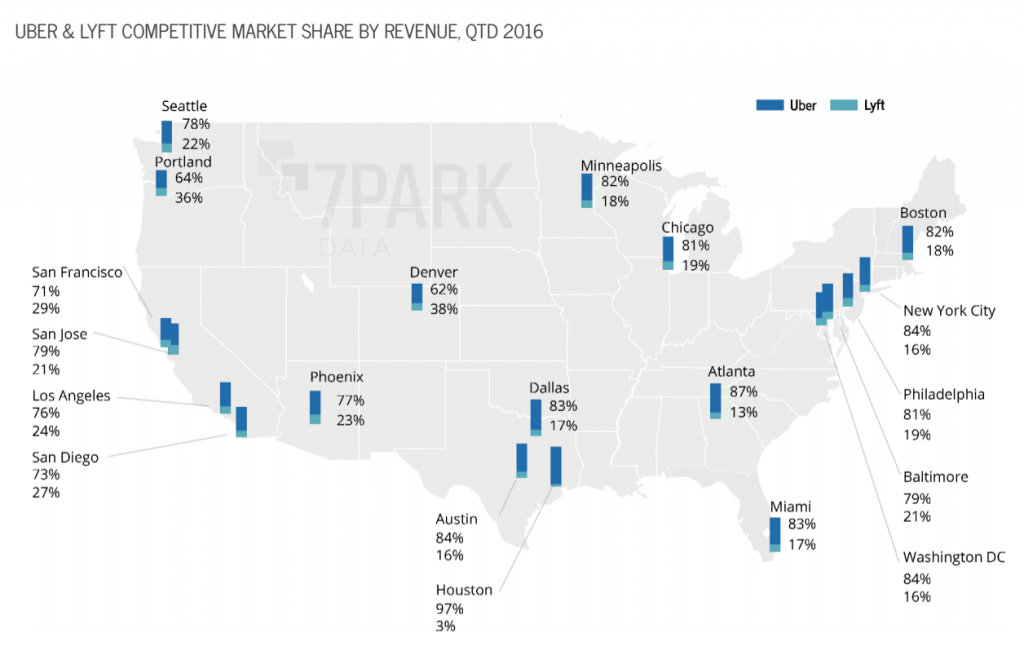
There's also plenty of overlap with Uber and Lyft users. "We find that seven percent of Uber riders also rode on Lyft at the beginning of 2014, which began to increase at a faster rate in 2015," the report states. "The figure more than doubled to 15 percent in August 2016 demonstrating that fungible consumer valuations of ride-sharing operators do lead to platform crossover, especially given the ease of accessing new apps and their respective services."
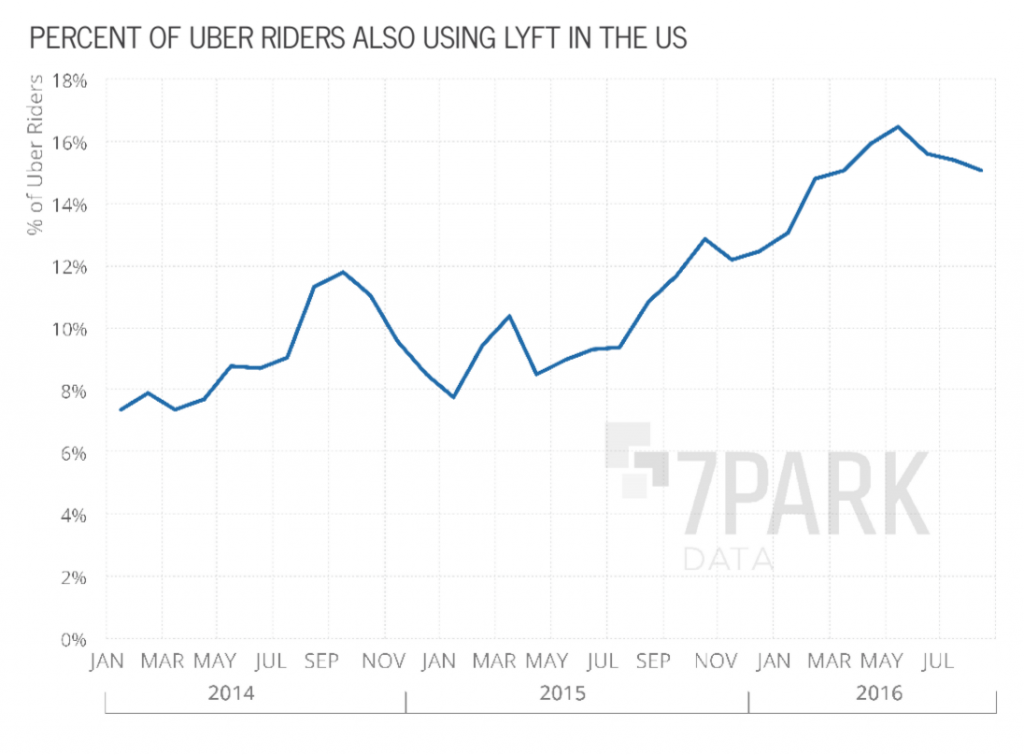
Source: 7 Park Data
The U.S. is clearly ride-sharing's most mature market and U.S. companies like Uber have had trouble expanding overseas in places like China, India, and much of Europe. Then again, 7 Park's report found Uber is installed on nine percent of smartphone devices in UK versus 0.6 percent installs for Hailo, one of Uber's largest UK competitors.

